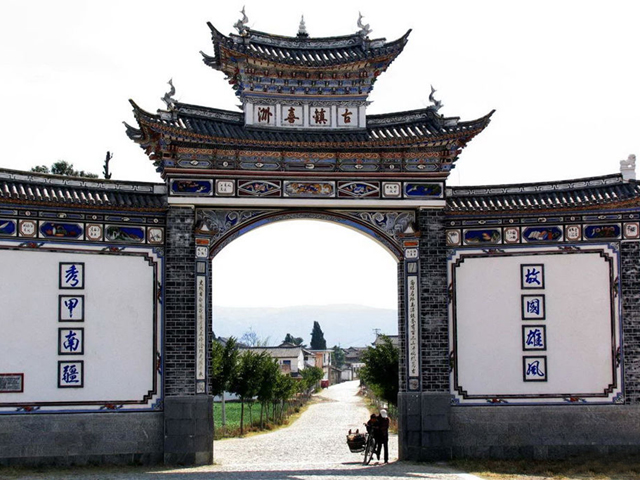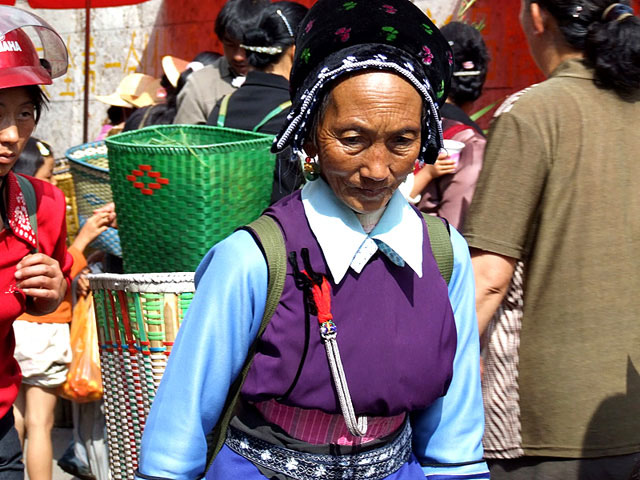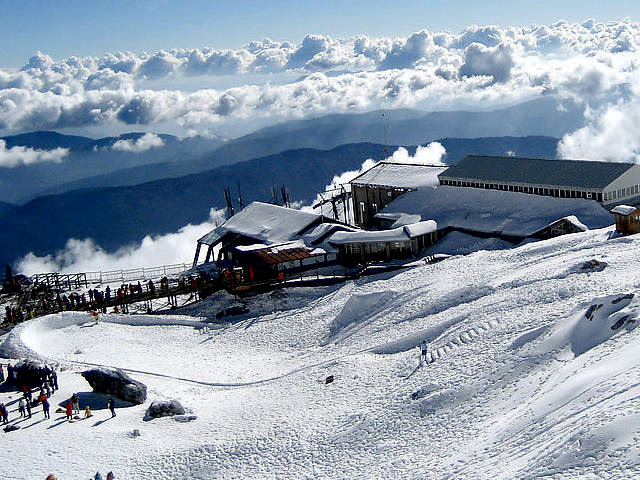Xizhou Village lies in the fertile strip of land between beautiful Erhai Lake and Cangshan Mountain. In this area, protected by the lake and the mountain, the Nanzhao and Dali Kingdoms had the capital of their extensive territories. These kingdoms were accomplished in architecture and engineering as can be seen from the still standing Three Pagodas located between Xizhou and Dali and other sites nearby. Later, during the Ming Dynasty (1368-1644), Xizhou prospered on the southern silk road, and the area's tea and marble products were traded all over Asia. Bai merchants traveled all over Asia. Through the long era of trade in tea, horses, marble, and other goods between this part of China and Tibet and Burma, Xizhou was an enclave for prosperous merchants, officials, and scholars. Bai families emphasized academics, and during the Ming Dynasty scholars who passed the national examinations were publically honored by having their names written in the public square at the center of the village.





